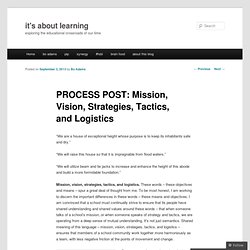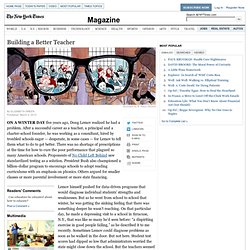

A faculty-focused course design/redesign process - viewcontent.cgi. From Turn-It-In to Posting, Publishing, Presentation, & Portfolio - Vander Ark on Innovation. Flip This: Bloom’s Taxonomy Should Start with Creating. Teaching Strategies Chris Davis, Powerful Learning Practice LLC By Shelley Wright I think the revised Bloom’s Taxonomy is wrong.

I know this statement sounds heretical in the realms of education, but I think this is something we should rethink, especially since it is so widely taught to pre-service teachers. I agree that the taxonomy accurately classifies various types of cognitive thinking skills. Conceived in 1956 by a group of educators chaired by Benjamin Bloom, the taxonomy classifies skills from least to most complex. Many teachers in many classrooms spend the majority of their time in the basement of the taxonomy, never really addressing or developing the higher order thinking skills that kids need to develop. Rather than starting with knowledge, we start with creating, and eventually discern the knowledge that we need from it. Here’s what I propose: we flip Bloom’s taxonomy. Creating at the Forefront In media studies we often look at the creation of print and digital advertisements. Plp. Personal Learning Plan I completely and wholeheartedly buy into the “lifelong learning” thing.

As humans, I believe we are innately lifelong learners – we almost can’t help learning throughout our lifetimes. It is our condition to learn. Period. Still, because of who I am and who I want to be, I have a plan for being truly intentional and purposeful about my learning. While I find it challenging to articulate my plp simply, I offer the mindmap below as an attempt to do so. Below the image, I expand on a few of the nodes in the mindmap, and I also showcase some elements of my more formalized learning endeavors. Podcasts Bo’s Podcasts p 1 of 2 Bo’s Podcasts p 2 of 2 RSS Feed Library – Feedly Stack Reading In 2005, I began a discipline called “stack reading.” First, I’ll read a book pretty quickly, and I’ll limit myself to one page of high-level summary notes. Personal learning plan I professional learning I books & videos Like this: Like Loading...
PROCESS POST: Mission, Vision, Strategies, Tactics, and Logistics. “We are a house of exceptional height whose purpose is to keep its inhabitants safe and dry.”

“We will raise this house so that it is impregnable from flood waters.” “We will utilize beam and tie jacks to increase and enhance the height of this abode and build a more formidable foundation.” Mission, vision, strategies, tactics, and logistics. These words – these objectives and means – spur a great deal of thought from me. To be most honest, I am working to discern the important differences in these words – these means and objectives. On many mornings, as Lucy (my dog) and I are walking, we venture past this house that is being raised. Competency Education: The Next Great Disruptor in Education. Ceep.indiana.edu/hssse/Shernoff.pdf. HSSSE: CEEP: Indiana University Bloomington. HSSSE: CEEP: Indiana University Bloomington. The High School Survey of Student Engagement (HSSSE, pronounced "hessee") is a comprehensive survey on student engagement and school climate issues.

Previously, HSSSE was administered by the Center for Evaluation and Education Policy (CEEP) at Indiana University as a fee-for-service to schools, districts and other groups who wanted to examine high school student engagement. Since 2003, HSSSE has been used to measure the engagement of secondary students, with more than 400,000 students in over 40 states completing the survey between 2006 and 2013. Starting in Fall 2013, the Center for Evaluation and Education Policy (CEEP) no longer administers HSSSE as a fee-for-service.
Going forward, the use of HSSSE survey items by schools, districts, and researchers is permitted without charge. HSSSE and the Center for Evaluation and Education Policy (CEEP) must be cited/referenced in documentation and publications. HESSE Survey Sample.
Blended Learning. Flipped Classes. Innovation. Ed Tech. Building a Better Teacher. Illustration by R.

Kikuo Johnson Benjamin Norman for The New York Times Doug Lemov, left, observes a fifth-grade class at True North Troy Preparatory Charter School, a school he helps run in Troy, N.Y. Lemov himself pushed for data-driven programs that would diagnose individual students’ strengths and weaknesses. But as he went from school to school that winter, he was getting the sinking feeling that there was something deeper he wasn’t reaching. But when it came to actual teaching, the daily task of getting students to learn, the school floundered. Around the country, education researchers were beginning to address similar questions. This record encouraged a belief in some people that good teaching must be purely instinctive, a kind of magic performed by born superstars.